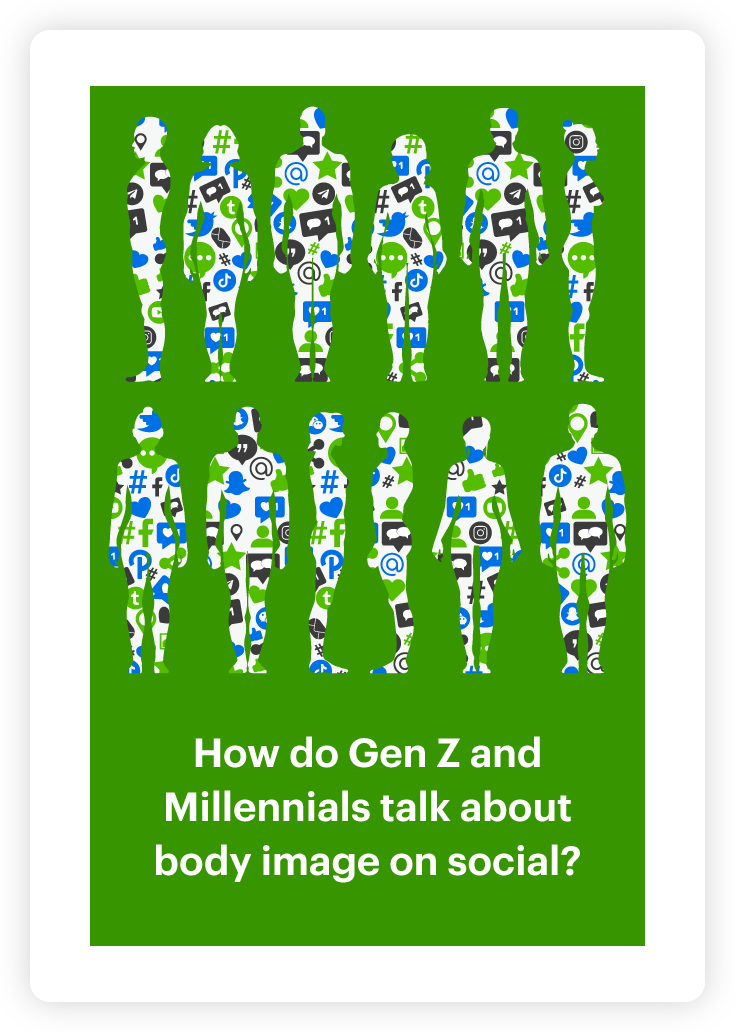Analyzing the language of beauty

By Beth Thomas
We’re proud of our relationship with Lancaster University and we love being surrounded by the talent of their world-class marketing students. So when two students approached us and asked to use our platform to discover audience insights for their postgraduate dissertation, we were only too happy to oblige.
These student’s interests lay in influencer marketing, so they used our platform to carry out research into the online language of followers of beauty influencers.
Using Relative Insight’s text analytics software, they compared the language of people who follow the biggest names in the beauty space, with that of the language of people who follow smaller micro-influencers. It’s important to stress that there will be crossover between these groups (as people can follow as many influencers as they like), but comparing them as separate groups provided insights into the ‘types’ of people who follow the biggest names, and those who take inspiration from alternative sources.
Who follows the biggest beauty influencers?
Rebellious (but cheerful) teens:
Compared to followers of niche or micro-influencers, there’s a higher contingent of high-schoolers following the beauty mainstream, and they talk (read: complain!) 1.4x more about their parents and 1.6x more about their teachers.
Linked to this is a tendency to post self-focused content on Twitter, so they talk less about external events and more about their own feelings and day-to-day events in their lives, using 1st person pronouns 1.3x more. That’s not to say they’re self-absorbed people; they’re teens undergoing a developmental stage where everyone has trouble seeing beyond their own concerns.
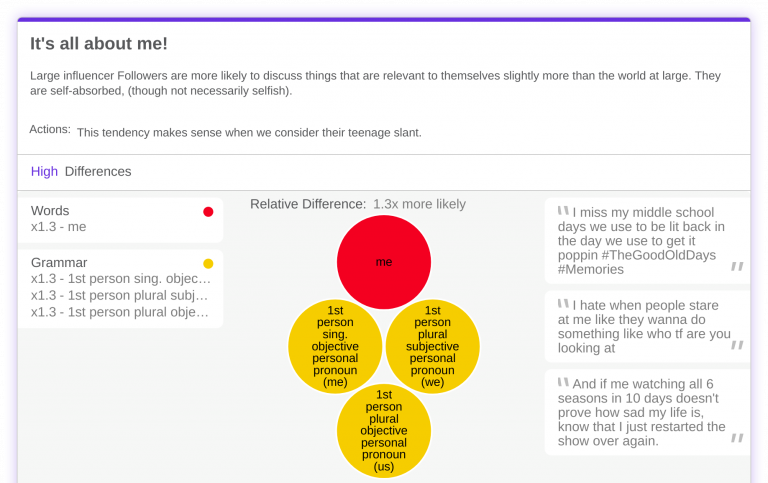

Despite their tender age, these #makeupgoals scamps are also 1.3x more likely to use rude, sweary language. Their words are more colloquial than aggressive in nature, but we are aghast to think what mum and dad might say! If they carry on like this, they might just have their favourite brow palette confiscated!
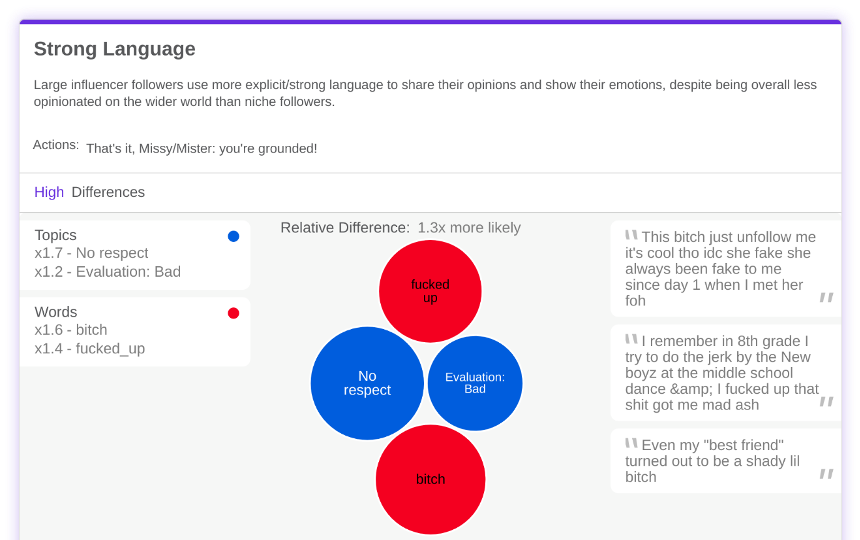
Aside from the expletives, their language is generally quite chilled, and they’re 1.2x happier bunnies than their niche-influencer-following counterparts. They talk about relaxing and how happy their favourite music makes them. D’aww!
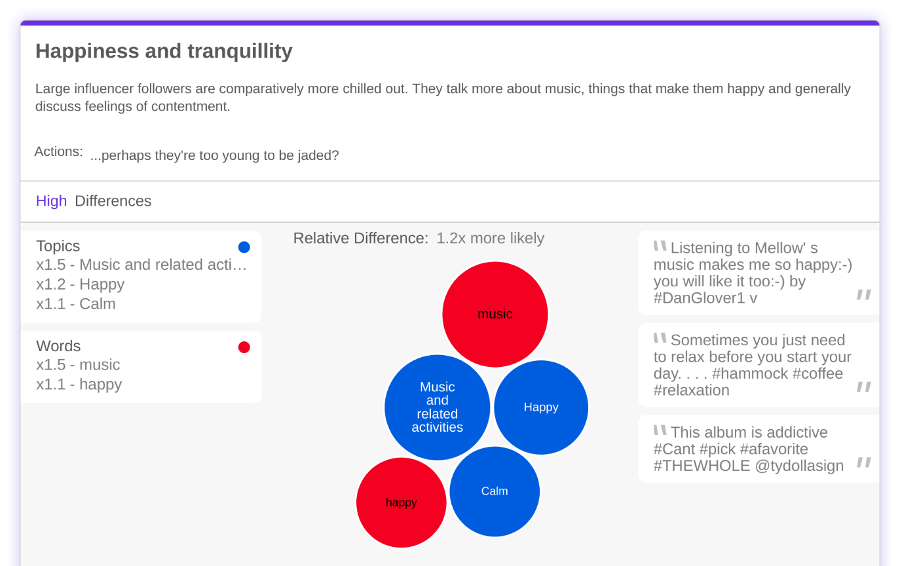
The last, and most interesting thing about this group is how they’re more likely to post as they have a greater tendency to click ‘share via Twitter’ as they’re watching YouTube. This means that YouTube will automatically update with who is watching what, and the app will track and publish follower loss and gains.
Creating a social media presence is clearly important to these teens, yet their posts are more likely to be passive. Furthermore, they’re 1.2x more likely to retweet other people’s opinions on broader things like politics rather than posting their own. As young people, perhaps they’re testing the waters. As they grow and find their feet, they’ll likely branch out into their own political opinions, and maybe even find more niche influencers as their passion for beauty grows.
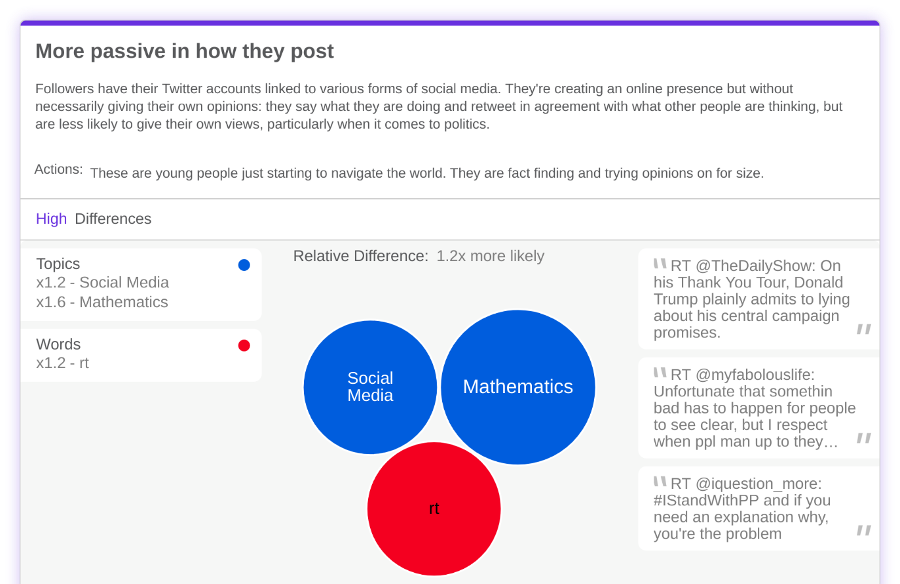
Who follows niche beauty influencers?
Discontent innovators:
Followers of niche influencers seem to have a wider interest in fashion, and for them, makeup and cosmetics are just one part of an outfit. They like to experiment, not just with their style but in all aspects of their lives. This demographic get bored 1.1x more than mainstream followers, so they seek out novelty, not only in who they follow, but in terms of seeking out the newest music, content and fashion.
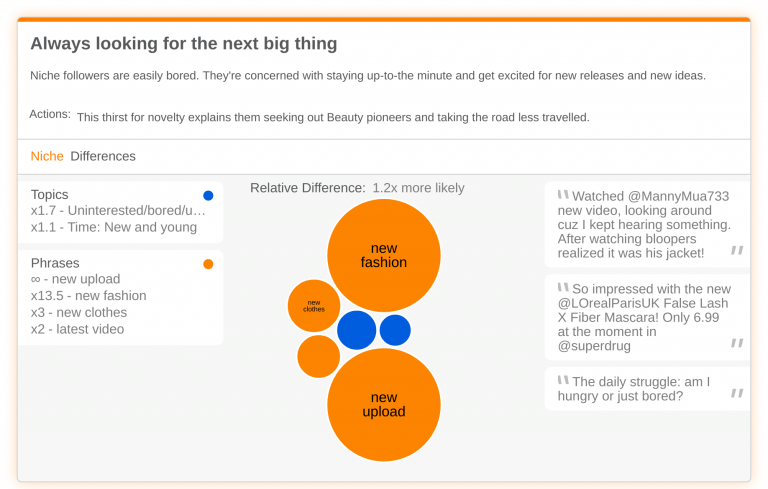
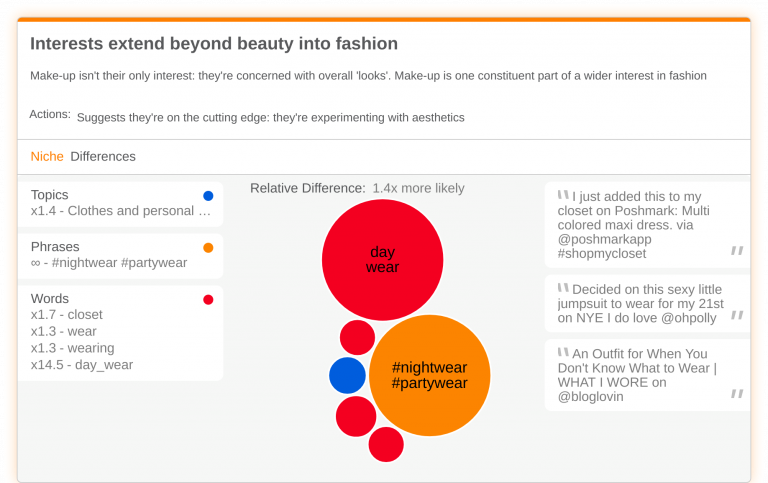
In contrast to mainstream followers, the niche group have a great deal of emotional investment in the world around them. They discuss politics, express their own opinions on the world and express discontentment with it 1.2x more. By and large, they’re not a group of people who feel secure or confident in their future. Perhaps this explains their 1.8x higher engagement with horoscope content, so when the real world makes the future seem uncertain, looking to the stars can provide some reassurance, regardless of whether they’re earnest in their belief.


What does all this tell beauty brands looking to expand their influence marketing strategy ?
- Take an individualist approach when targeting followers of the biggest influencers: what does your product say to and about the person who wears it?
- If you’re aiming at teens, then target followers of mainstream beauty influencers.
- If you’ve got a brand new or innovative product, marketing via the biggest influencer could be less effective than smaller deals with multiple micro-influencers.
- Taking a stance on political issues makes an impression with everyone: followers of mainstream influencers would retweet you, and followers of niche influencers would vocally agree!
- Astrology themed makeup palettes would #slay!
Relative Insight can analyze any source of language data – from customer reviews to survey analysis, to analyzing qualitative market research. The possibilities are endless!
Research conducted and analysed by Josie Pool and Hannah Rothman.
